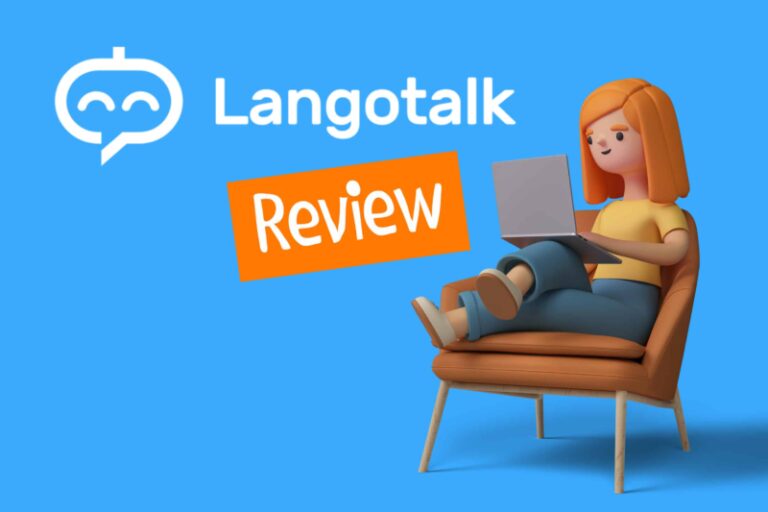My Honest HiNative Review: Great for Quick Answers to Questions, but Not for Language Exchange

As someone who was extremely shy about asking questions in my Chinese and Spanish classes, the concept of HiNative intrigued me. It kept popping up in “best language app” lists, so I thought I’d test it out myself.
I felt from the get-go that this straightforward Q&A app was working well for my introverted self. But I wanted to take a deeper dive and see if HiNative offered more than just quick responses from native speakers.
Overview

Name: HiNative
Description: A forum where learners can get language answers and corrections from native speakers.
Languages offered: 113 languages with app users from 170 different countries.
Offer price: Base program is free with in-app purchases for $1-$250; premium monthly subscription is available for $5.68/month, $59.63/year
Summary
While there’s definitely room for improvement on the app, HiNative is still quite useful for all language learners no matter what level you’re at. HiNative is only made for quick translations, assistance with language basics and cultural questions
-
User friendliness - 7/107/10
-
Delivers on promises - 7/107/10
-
Authenticity - 8/108/10
-
Value for price - 3/103/10
Pros
- Simple, straightforward interface
- Quick answers from the real experts
- Encouragement to help fellow learners
Cons
- Lack of moderation in posts
- Missed connections with native speakers
- Limited translations for free users
Download: This blog post is available as a convenient and portable PDF that you can take anywhere. Click here to get a copy. (Download)
What Is HiNative?
HiNative is a web and mobile app by the same creators of Lang-8, which is a social networking platform for language learners. It’s basically a Q&A app between learners and native speakers where you can ask to have your pronunciation or sentences checked.
Unlike other language exchange apps you might have encountered, HiNative is only made for quick translations and help with language basics and cultural questions—generally, nothing too lengthy or demanding.
The app currently supports over 110 languages with app users from 170 different countries, so you are very likely to find the language you need on this app.
What Are the Features of HiNative?
When you sign up for HiNative, you’re asked a few questions about your languages (both native and target). You’ll also answer questions about why you want to use the app and where you most commonly use your target language, like direct conversations, work, school, email communication and other similar options.
You have several features available once you’ve registered for an account, which I look at in more detail below.
Question Templates
As a Q&A app, the most prominent feature is the question feature. Templates are provided to guide you in creating questions related to translation, pronunciation and grammar. Just be aware that a couple of these templates are limited to Premium users.
If none of these templates fit your needs, you can write a free question in the “Ask freely” section.
Your questions will be text-based, but you can also take pictures, upload photos and record your own audio, depending on the kind of language assistance you’re looking for.
There are multiple types of questions to ask, such as “how do you say this,” “what does this mean,” “does this sound natural,” “what’s the difference” and more.
Corrections
Once your question goes live, native speakers can respond to your post. They can offer answers, corrections or advice in text or audio. If the text answers are in your target or another language, there’s an option to show the translation. For text-based answers in Chinese, you can also see the pinyin.
In most cases, you get an instant response from AI. To test how good this was, I used the “what does this mean” question feature to see how AI would explain naguará, a Venezuelan slang word. And to my surprise, it actually answered very accurately.
Answers can also be rated. Each response will have the question “Was this helpful?” to which you can respond with “Hmm…” or “Useful.” Other users can also rate the answers by “liking” responses.
Additionally, you can send another user a “gift.” These thank-you gifts are basically appreciation stickers that cost coins, which you’ll need to purchase.
Of course, if the answer is offensive, you can also block or report the user.
Since this platform is all about give and take, try to answer questions from learners whose target language is your mother tongue. When responding, you’ll also see their proficiency level as a reminder to keep your answers as simple as possible.
In turn, your answers can also be rated and are eligible for quality points. Likes from fellow native speakers will earn you more points, especially from highly-rated ones.
You’ll also earn additional points if your response becomes the featured answer to that question.
Search
Another main feature of HiNative is the built-in search engine. Before you ask a question, you can search for previous posts to see what native speakers have answered in the past.
HiNative uses DeepL and Google Translate, so whatever you type in the search bar will automatically be translated below. Your search results will appear underneath the translated text.

How Much Does HiNative Cost?
A free HiNative account lets you use most features, including all of the basic functions and most of the question templates. You also get up to four translations per day.
Coins are needed for sending gifts and listening to audio responses and can be bought in bundles between $0.99 and $810.99.
The Premium version costs $5.68/month and Premium Pro costs $28.99/month (with annual options, too). Both paid accounts make your questions more visible and give access to all the templates. Premium gives you 50 AI answer credits per month and Premium Pro gives 1,000 per month.
What I Like About HiNative
Simple, Straightforward Interface
While I can appreciate a smart design, I’m also not the best with technology. When it’s something as simple as a Q&A app, I expect the interface to be equally straightforward. HiNative completely delivers on this front.
If you look at the website and app, there’s nothing fancy—and, therefore, nothing complicated—about it. The design is basic and so easy to use that I’m pretty sure my technologically challenged parents could use the app with little to no issues. Even the question templates are effortless.

Sure, HiNative may not be the most visually engaging interface, but this makes the app less confusing so you can easily post your questions without a hitch.
Quick Answers from the Real Experts
I can’t remember how many times I’ve learned a “common sentence” from a textbook, only to find out from real Chinese speakers that no one actually talks like that. As thorough as textbooks and language courses can be, they rarely ever speak about the experiences of native speakers (although this is slowly starting to change in recent years).
Through HiNative, you’re going straight to the source, getting quick answers so you understand unique aspects of culture and sound a little more like a native speaker. It also takes away the pressure of talking directly to native or fluent speakers, so you don’t have to be afraid of asking for help.
Encouragement to Help Fellow Learners
I love that the HiNative community is built on helping each other out. Of course, you don’t have to answer other users’ questions if you don’t feel like it, but the upside of responding to posts is the increased possibility of likes and quality points.
These points build your reputation—the more quality points you have, the more likely it is that your questions will get noticed as they move further up the feed.
As I said earlier, it’s all about that give and take. You have to help others if you want others to help you.
What I Don’t Like About HiNative
Lack of Moderation in Posts
HiNative is meant to be a platform for unique language queries, translation and pronunciation help. However, the truth is that a lot of people aren’t using the app the way it’s intended to be used.
For example, I found that some users treated the app like Google, asking for app recommendations and methods for learning Chinese characters. These questions were also repeated, pushing other relevant language questions further down the feed so they end up getting buried by newer, less-than-inquisitive posts.
Many also use HiNative for homework assistance, but instead of asking about specific grammar points or checking a translation, they ask for entire sentences and paragraphs to be translated into their target language.
It’s clear that there isn’t a lot of moderation in these posts. Ideally, users should be searching for their questions on HiNative and search engines in general before posting their own.
Missed Connections with Native Speakers
Although HiNative adds that human element to language learning, I wish there was an option to chat with other learners, specifically native speakers of your target language who want to learn your mother tongue.
I understand that it’s a public forum, but there’s always the possibility that your questions can go unanswered. If you could directly communicate with users who responded to your previous posts, you’d be more likely to get a reliable answer. Establishing this kind of relationship would benefit you and the native speaker in the long run since it feels like less of a risk asking someone you’ve previously communicated with.
Limited Translations for Free Users
Another thing I noticed about HiNative is that questions can’t be filtered according to your native language. Even if you filter your search to questions about Mandarin, these questions can be in any language. For example, my feed was filled with posts in Japanese and Vietnamese.
I know that you can translate questions into your native language. But as I mentioned before, you’re limited to four translations a day with a free account. It’s not the end of the world since you can copy and paste the questions into other translation apps, but it’s inconvenient having to switch between them.
Alternatives to HiNative
HelloTalk
HelloTalk is a language exchange app. It connects you with native speakers and gives you filtering options, like which other languages they speak, where they live, their gender and age range, etc.
You can chat with your language partners and use the app’s translation features. You can also video call, audio call, send images and gifts, send voice messages and more.
HelloTalk also has live streams you can join, which are like online discussions with other learners and native speakers of your target language.
If you’re interested, you can check out our full HelloTalk review here.
italki
italki is an online tutoring platform that lets you take private lessons with tutors of your target language at affordable rates. Tutors can be professional teachers with qualifications or “community tutors”—native speakers without formal training but provide tutoring lessons.
You can also follow other users and ask questions in the “Community” tab to receive quick answers from tutors and native speakers.
italki also has group classes—many times at cheaper rates than private lessons—for certain languages, like Spanish, Japanese, Mandarin Chinese and Portuguese.
You can find our in-depth italki review here.
FluentU
With FluentU’s Chrome extension, you can use our interactive learning tools with any subtitled content on YouTube or Netflix. You can even import your favorite YouTube videos directly into your FluentU account for customized learning!
FluentU also gives you access to a huge library of real-world videos—movie trailers, news clips, music videos, and more—all organized by topic and level.
No more stopping to look up words or struggling to keep up with fast speech. While you watch, FluentU’s interactive captions let you tap on any word for an instant definition, audio, image, and example sentences.
Worried you’ll forget all those new words from the videos? We’ve got you! Our fun, adaptive quizzes reinforce what you’ve learned and even give you extra practice with words you find difficult, making sure they stick for the long run.
Ready to make every video a language lesson? Start using FluentU on your computer or tablet, or download the FluentU app from the App Store or Google Play. Click here to take advantage of our current sale!
Final Verdict: Should You Download HiNative?
While there’s definitely room for improvement on the app, HiNative is still quite useful for all language learners no matter what level you’re at. It’s especially helpful for independent learners looking for feedback and answers to one-off questions.
As for the Premium account, I don’t think it’s worth signing up for. The Premium plan doesn’t cost much, but I honestly think it would only be worth paying for if you’re a serious student with lots of tricky questions. Or if you need extra guidance with grammar and pronunciation checks.
When you use HiNative, you do need to set your expectations. It isn’t a platform for finding a language exchange partner or practicing speaking and writing skills. Rather, it’s an app for questions that can be used to supplement your learning rather than a standalone language-learning program. So it’s best to pair it with other language resources.
I hope this review has offered the insight you needed before downloading HiNative. It’s a great stepping stone toward actual language exchange. It’s also a nice reference to have on hand, even if you don’t end up using the app on a regular basis.















